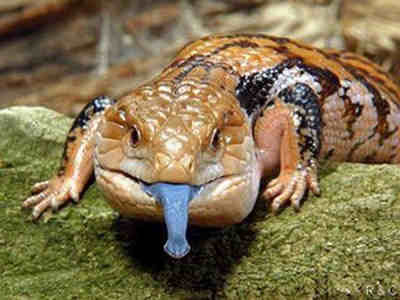

There are 5 species of Blue Tongue Lizard all of which, with the exception of the Pygmy Blue Tongue from South Australia, are easily identified by their blue tongues.
The Pygmy Blue Tongue's tongue is actually pink!! Just about wherever you are on the Australian mainland, you may encounter a Blue Tongue Lizard of some kind. Growing to a maximum of about 45-50cm long in some species, the females are generally larger than the males, whilst the males can generally be distinguished by their larger heads.
While still a common sight in some suburban gardens, they are becoming rarer as we clear their habitat, and introduce household pets such as cats and dogs.
Females give birth to up to 25 live young in the summer months....however there is little maternal care with the young dispersing after a couple of days. Their main diet consists mainly of snails, and small insects, although they will eat fruit and vegetables as well.
All Blue Tongues are members of the Skink family, which includes all the small brown lizards we see in our garden in summer.
Every skink with the exception of one, the Shingleback, has the ability to drop its tail if attacked by a predator.
This process known as autotomy, allows the lizard to escape, after which it can regrow its tail. If a tail is partially detached and the lizard escapes, a second tail will grow.
Look after your blue tongues if you have them, they are nature's little pest controllers!!
Make a free website with Yola